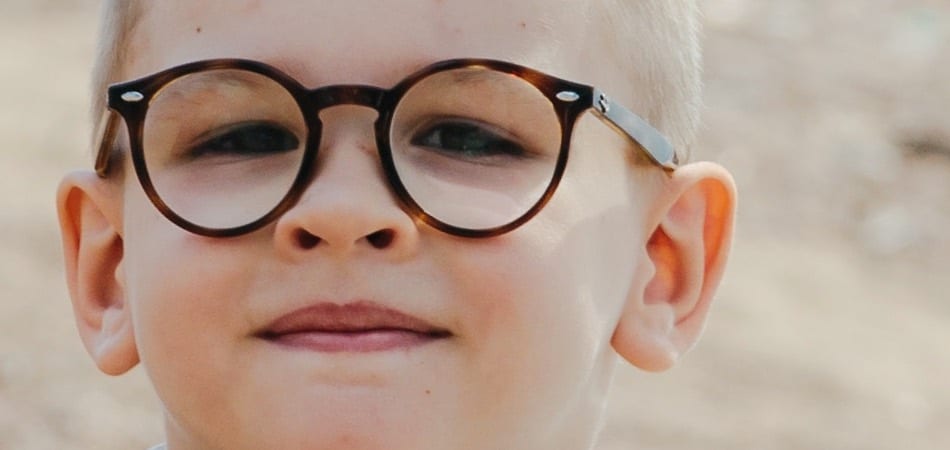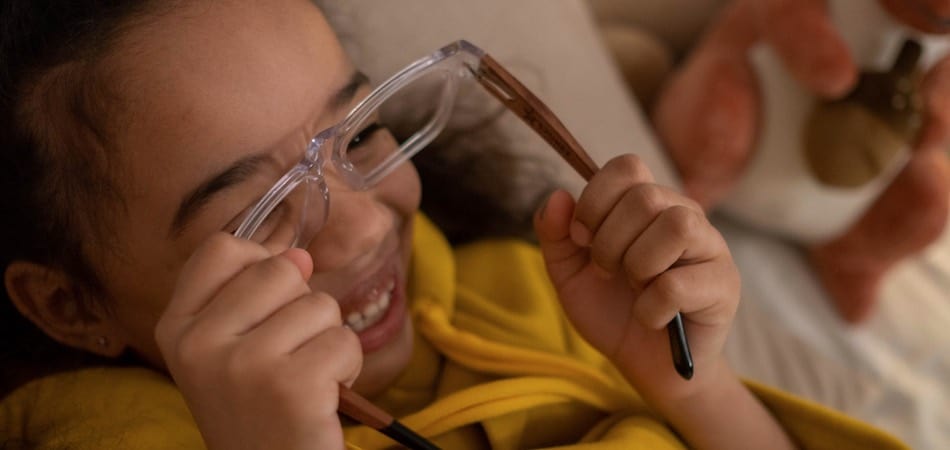The topic of myopia control is gaining momentum and for many customers it seems as if the topic has just suddenly appeared. All of a sudden there are recommendations for new types of contact lenses, glasses and eye drops, but how can you recommend something that is practically so new and does not yet have any empirical values to show?
Therefore, in this article we would like to go into more detail on the subject of myopia control (myopia management) and our experience. Because the topic is already older and there is already some data in general and our experiences with the products, which we want to share with you here.
In our customer base, we can look at empirical values that are in line with the majority of studies. In most cases, children experience a slowing of about 50-60% in terms of the progression of myopia.
In some children we see that nothing happens and the spectacle power remains at the same level since the myopia control was started and there is also a very small number of children in whom the myopia continues to progress.
It is therefore not a promise that nothing will change in the prescription of the glasses, despite the myopia control. However, on average, after hundreds of cases, in the area of myopia control, it is seen that the children who receive early care show a smaller increase in myopia.
Here I am not recommending specifically one product, but I talk generally across special lenses, Ortho K contact lenses, soft and hard contact lenses designed for myopia management. The best variants in general are at time:

- Lenses for glasses such as the Myosmart, Stellest, MyoVision
- Ortho K (night lenses)
- 1 MiSight daily contact lenses
The order here is not intended to represent the ranking. The selection itself is very individual and differs from case to case. However, all of them bring between 50 and 60% less increase in myopia compared to normal glasses lenses or contact lenses.
The marketing works according to experience and often a manufacturer will still use a certain segment of study participants where the product showed slightly less myopia increase and advertise these few percent more.
In essence, however, one can say myopia control is useful, but the product (or combination of products) used is secondary in itself. It must work for the child. And by that I mean the myopia control solutions must be used. The more hours in the day the better. But let’s compare in more detail the designs of lenses and contact lenses in the field of myopia control, so you know what experience you can expect.
Children’s Experiences During Myopia Control When Looking Through Spectacle Lenses.
The children’s experiences are relatively similar in terms of the lenses considered. Hoya’s Myosmart, Essilor’s Stellest, and Zeiss’ MyoVision all have an area positioned in front of the pupil that provides sharp vision. It is only when eye movements are made that are not straight ahead that the child notices that he or she is also seeing you out of focus. Thus, in each of the solutions, the child must pay more attention to moving the head than to making eye movements.

This may sound very impractical in theory, but in practice all the glasses work very well after a very short time. The vision becomes a little blurrier when the child looks through the myopia control zone area, and it becomes sharp again when the nose is aligned with the line of vision. The lenses are accepted very well and quickly by the children.
If the lenses should be made of polycarbonate, it could be that the experience with the myopia control lenses is worse than with the old lenses in terms of perception of color fringes. Background is the material polycarbonate scatters light slightly differently and a small percentage of children then notice that, for example, over a white wall, a minimally increased bluish or yellow shadow.
Mostly this also happens with spectacle strengths over -4.00 diopters in combination with polycarbonate. The solution in this case would be to abandon the polycarbonate material and order other lenses. However, the advantage of polycarbonate is that it is extremely resistant to breakage and has UV protection.
Vision with myopia control lenses changes more at night compared to daytime compared to conventional lenses. The background is that the myopia control zone produces more stray light outside. A lighted lantern or traffic light often gets a halo of light as a result.
Some children also describe the experience as seeing a halo around a lantern at night. This is not a problem, however, because the halo disappears as soon as the head is pointed in that direction again. It is different with contact lenses.
Children’s Experience During Myopia Control When Looking Through Contact Lenses or During Ortho K Fitting
Contact lenses have a bit of a learning curve in terms of care and insertion and removal. As a rule, however, children usually do better and are more accurate than adults once the process is internalized. Most children are ready for it, for a few it is nothing because they don’t want it or because it is not recommended. Some children and parents have trouble following the processes or go wear the lenses and then times don’t, don’t care for the lenses properly etc. and in such a case wearing contact lenses must be discontinued.
The child usually has a slight foreign body sensation (itch) with the contact lenses on the eye every now and then if they are soft lenses and they have to get used to that. However, this is usually very uncomplicated. There is no foreign body sensation at all with the night lenses during the day, because the child has nothing on the eyes and the foreign body sensation is stronger when he puts on the dimensionally stable contact lenses before going to bed.
Form-fitting myopia control lenses worn during the day usually provide the longest acclimation period. All solutions work best in most cases 1 day lenses (MiSight) or night lenses (Ortho K). For example, halos around lanterns are also noticeable here at night. However, how much your child will experience these depends on the amount of refractive error and the size of the pupil.
In contrast to glasses, however, this phenomenon is more frequent and can hardly be avoided at night. So also eye movements help only conditionally. Here a test phase shows whether the myopia control solution is practicable. In winter, it gets dark earlier and even a somewhat poorly illuminated room already leads to a larger pupil and thus to the well-known halos or halo effects with Ortho K lenses.
Prices
The prices for myopia control are about 600-800 $ per year. This includes all options from contact lenses to spectacle lenses.
As an example, a daily lens MiSight costs 35 $ per pack of 30 lenses. Since the child needs two of them when worn daily, two packs are consumed per month. This results in costs of $70 per month.
The lenses are usually around 580 $ for the pair. In addition, there is a frame, which in most cases is around 130 $.
Parents’ Experience and Advice on Myopia Management
Unlike normal care, myopia control solutions have more appointments to ensure that the supply of lenses or contact lenses is optimal. Depending on the lens or contact lens solution, this means that after purchase you will have 3 – 4 four appointments within a six month period where the fit and handling will be checked and whether the myopia control solution is working. These appointments are quite short and last between 10 and 30 minutes.
Many parents are happy that there are now products that can control the progression of myopia. In general, the experience is very positive with all products related to myopia management. Only about one out of every 100 fittings is discontinued because the child says he or she can’t handle myopia control and prefers the old lenses or contact lenses.
